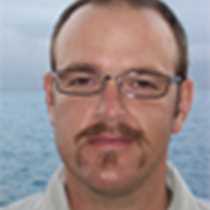Española Island
The island starts to appear out of the fine mist early this morning, as we prepare ourselves for pre-breakfast kayaking. Along the coast of Española we marvel at the barren cliffs with massive Opuntia prickly pear trees hanging onto almost nothing. Pacific green sea turtles raise their heads out of the water for a breath of air as we glide by, a wonderful way to start the day. A bountiful breakfast is well received, followed by getting snorkeling equipment to head back out to Gardner Bay. Some of our intrepid snorkelers go to Gardner Island, which is a small satellite island close to Española. As sea lions play with us we notice an interesting biodiversity of fish from temperate and tropical regions all in the same area. After our return, we head to Gardner bay beach to meet up with the rest of the group. In the distance, the coralline beach appears to be littered with boulders. However, upon closer inspection we find hundreds of sea lions resting and some with young pups nursing. The sun eventually showed up poking through the mist and warming us.
A short navigation brings us to the western side of Española Island and Suarez Point. This site holds an incredible density of life as this is one of the first and last areas to be directly affected by the rich sub-Antarctic current of Humboldt. Upon landing we encounter various new born sea lion pups and a couple of females that appear to be ready to give birth at any moment. The large marine iguanas have recently exited the ocean after foraging on algae and are trying to warm up in the sun. As the afternoon continues they all orientate themselves towards the setting sun trying to maintain their temperature into the evening. Along the southern cliffs we are followed by curious Española mockingbirds that at times land on us. Nazca boobies are abundant with chicks and we start to witness the air traffic that is found in a large colony. Blue-footed boobies farther inland are also with chicks, and a few males still search for mates as they whistle and sky point trying to become a better attraction. In the distance large avian forms move about and as we come closer we find the majestic waved albatross of Española Island. Waved albatross only nest at Española Island and have a small overall population. We find chicks that have an appearance of big bird and are awaiting their parents to bring them a protein rich oil produced from calamari and squid that will allow them to gain weight and eventually fledge by the end of December. Halfway on our path we witness the power of the ocean as wave’s pound into the southern cliffs and compress into a crack that sends water vapor 70-80 feet into the air. Albatross flit back and forth along the cliffs trying to find their chicks and others stumble over the boulder terrain going to the edge where they will take off. As the sun dips quickly we return to the landing area only to find a sea lion starting to give birth and all are given a firsthand show of the continuation of life not only on Española but on earth.




